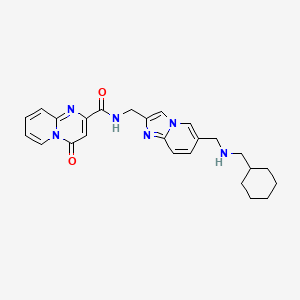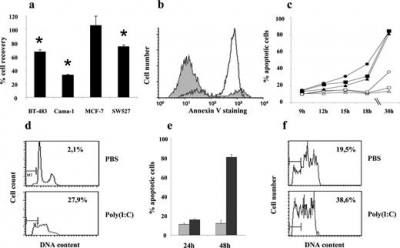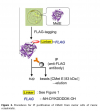BMS-986278
With a human LPA1Kb of 6.9 nM, the oxycyclohexyl acid BMS-986278 is a strong antagonist of the lysophosphatidic acid receptor 1 (LPA1). We present the structure–activity relationship (SAR) research that began with the therapeutic drug BMS-986020 (1), an LPA1 antagonist, and ended with the discovery of BMS-986278. BMS-986278's comprehensive preclinical pharmacology profiles in vitro and in vivo, along with its pharmacokinetics and metabolic profile, are explained. It was advanced into clinical trials, including an ongoing Phase 2 clinical trial in patients with lung fibrosis, on the basis of its in vivo efficacy in rodent chronic lung fibrosis models and excellent overall ADME (absorption, distribution, metabolism, excretion) properties in multiple preclinical species.
IraZolve-Mito
With a high selectivity for mitochondria in living cells, IRAZOLVE-MITO (iridium complexed with cyclometalated 2-phenylpyridine and the 5-(5-(4-cyanophen-1-yl) pyrid-2-yl)tetrazolate ligand) exhibits an emission spectrum in the 505–625 nm range 22. In contrast to organic fluorophores,
(-)-p-Bromotetramisole Oxalate
(-)-p-Bromotetramisole Oxalate, a synthetic compound, is mainly being studied for its immunomodulatory qualities and acts as a powerful and random alkaline phosphate inhibitor. It significantly stimulates the chloride channels of the cystic fibrosis transmembrane conductance regulator (CFTR).
Cytotoxicity LDH Assay Kit
In many areas of biomedical research, such as drug development, environmental toxicology, and disease pathology, cellular toxicity is an essential metric. Researchers frequently rely on trustworthy assays to precisely quantify cytotoxicity,
CFDA-SE
Chemicals known as CFDA-SE (5-(and-6)-Carboxyfluorescein diacetate succinimidyl ester) are frequently employed in biological and biochemical studies. The fluorophore carboxyfluorescein, which releases green fluorescence when stimulated by light, is the source of CFDA-SE. CFDA-SE is reactive to primary amines due to the succinimidyl ester group, which enables it to label amino group-containing compounds such as proteins.
Streptozocin
The soil-dwelling bacterium Streptomyces achromogenes is the source of streptozocin, also referred to as streptozotocin. It is structurally related to glucose and is a member of the nitrosourea chemical class. Because of its similarity to glucose, it is easier for pancreatic beta cells to absorb and causes a selective buildup in the pancreas. Streptozotocin, also known as streptozocin (INN, USP) (STZ),
SYBR Safe DNA Gel Stain
In molecular biology, cyanine dye SYBR Safe is utilized as a nucleic acid stain. DNA binds to SYBR Safe. Green light (λmax = 524 nm) is released while blue light (λmax = 509 nm) is absorbed by the resultant DNA-dye combination .Thermo Fisher Scientific, a division of Life Technologies, created the SYBR series of nucleic acid stains, which includes SYBR Safe DNA Gel Stain. The goal was to develop a less hazardous substitute for the widely used DNA stain ethidium bromide, which is known to have mutagenic effects.
Hygromycin B
A naturally occurring bacterium called Streptomyces hygroscopicus, which is frequently found in soil, produces hygromycin B. The antibiotic is a derivative of the nucleoside adenosine and is categorized as an aminoglycoside. Its unique structure, which consists of a 4-aminoglucose ring linked to a hygromycin A moiety, is what makes it unique.
Poly(I:C)
Polyinosinic-polycytidylic acid, or poly(I:C), is a synthetic substitute for double-stranded RNA (dsRNA). Poly(I:C) is made up of lengthy chains connecting repeating units of cytidine (C) and inosine (I). It is produced in a manner that closely resembles the structure of viral dsRNA, which frequently sets off the immune system's antiviral reaction.
























